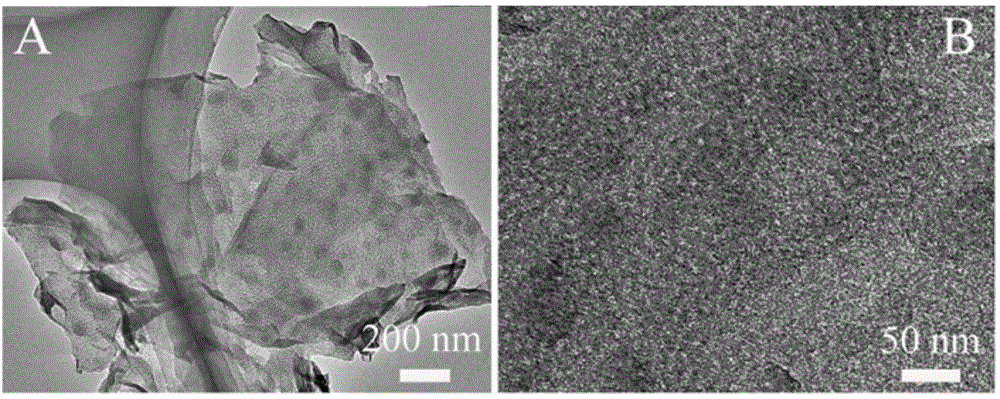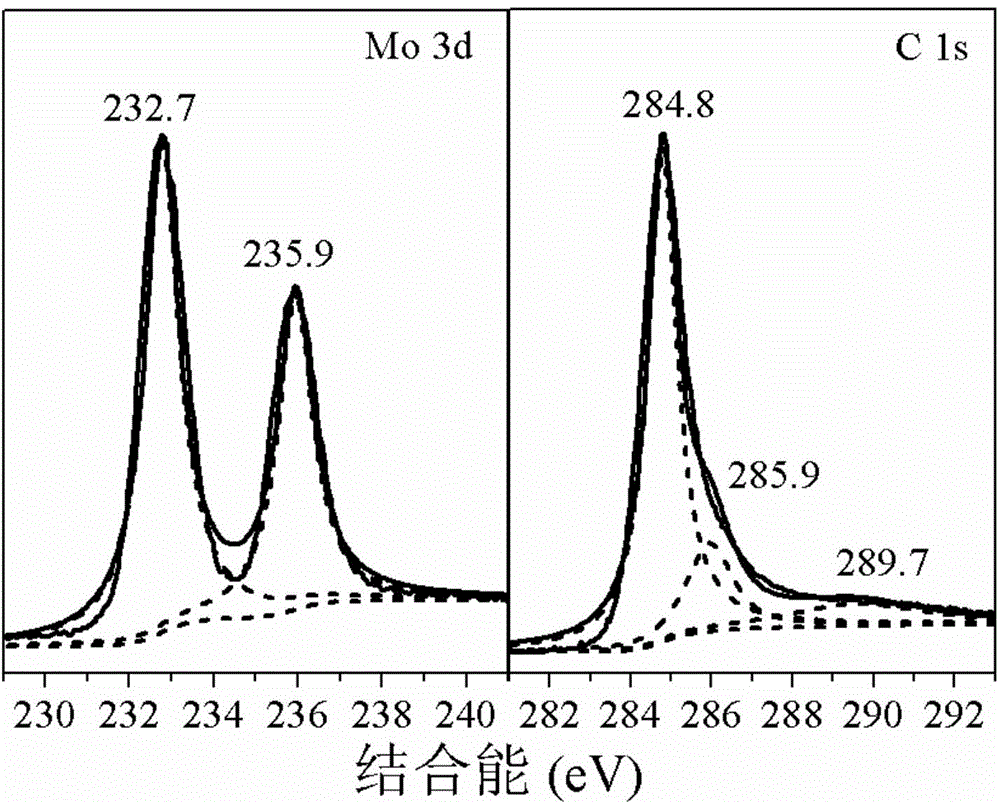Carbon-based composite fuel cell cathode oxygen reduction catalyst and preparation method thereof
A fuel cell cathode and composite technology, which can be used in metal/metal oxide/metal hydroxide catalysts, physical/chemical process catalysts, battery electrodes, etc. problems such as transport and ion diffusion properties, to achieve the effect of simple and controllable method, conducive to large-scale production and low energy consumption
- Summary
- Abstract
- Description
- Claims
- Application Information
AI Technical Summary
Problems solved by technology
Method used
Image
Examples
Embodiment 1
[0034] A method for preparing a carbon-based composite fuel cell cathode oxygen reduction catalyst, specifically comprising the following steps:
[0035](1) Preparation of graphite oxide: graphite oxide is prepared by using natural graphite powder through the improved Hummers method, which is divided into three steps. Step 1: Disperse 3g of graphite powder (325 mesh) in a solution consisting of 12mL of concentrated sulfuric acid, 2.5g of potassium thiosulfate, and 2.5g of phosphorus pentoxide, and reflux and stir in an oil bath at 80°C for 4.5 hours. Then it was naturally cooled to room temperature, and added dropwise to 0.5L deionized water in an ice-water bath (concentrated sulfuric acid exotherms when it meets water), and stirred overnight. Finally, filter through a PTFE filter with a pore size of 0.2 μm to remove excess acid, and dry at room temperature. Step 2: Disperse the above pre-oxidized graphite powder into 150mL of concentrated sulfuric acid, gradually add 15g of ...
Embodiment 2
[0046] A kind of preparation of nitrogen-doped mesoporous carbon-graphene composite body, comprises the steps:
[0047] Disperse graphite oxide in deionized water, the mass ratio of graphite oxide to deionized water is 2:1, ultrasonically disperse evenly, then add 10mL ~ 20mL phenolic resin prepolymer, ultrasonically stir to obtain a uniform solution, and then transfer it to In a high-pressure reactor, react at 120°C to 160°C for 10 to 30 hours; after it is naturally cooled to room temperature, wash it with deionized water and ethanol, and obtain a powder solid after suction filtration and drying; put the obtained powder solid in an ammonia atmosphere calcination at 600° C. to 900° C. for 1 to 5 hours to fully nitride it, and obtain a mesoporous carbon-graphene composite doped with nitrogen ions.
[0048] Figure 6 The cyclic voltammetry curves of the nitrogen-doped mesoporous carbon-graphene composite and the mesoporous carbon-graphene composite obtained in this example. in...
PUM
| Property | Measurement | Unit |
|---|---|---|
| Aperture | aaaaa | aaaaa |
Abstract
Description
Claims
Application Information
 Login to View More
Login to View More - R&D
- Intellectual Property
- Life Sciences
- Materials
- Tech Scout
- Unparalleled Data Quality
- Higher Quality Content
- 60% Fewer Hallucinations
Browse by: Latest US Patents, China's latest patents, Technical Efficacy Thesaurus, Application Domain, Technology Topic, Popular Technical Reports.
© 2025 PatSnap. All rights reserved.Legal|Privacy policy|Modern Slavery Act Transparency Statement|Sitemap|About US| Contact US: help@patsnap.com



